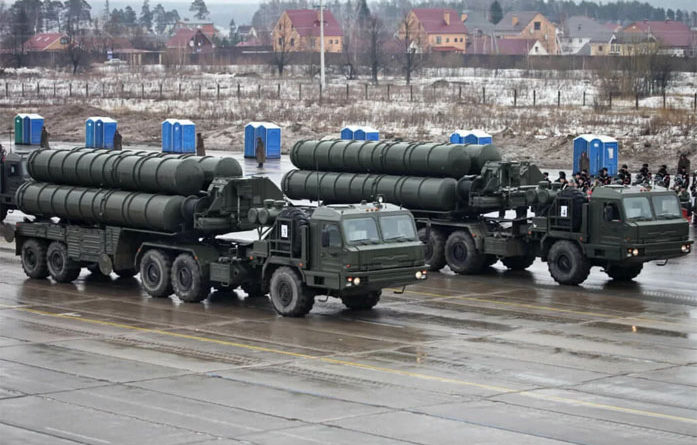India, Will Not Invite US Sanctions Over Its S-400 Deal With Russia
January 15, 2021
India had placed a $5.3b order for five units of S-400 in 2018 and paid Russia the first tranche of $800 million in 2019. Deliveries of all five missiles in installments will be completed by April 2023.
India is going ahead with its plan to induct the Russian S-400 Triumf surface-to-air missile. Undeterred by the prospect of the US imposing sanctions under Countering America’s Adversaries Through Sanctions Act (CAATSA), which it has done on Turkey, a NATO member, as well as China, New Delhi is keen to acquire the deadly missiles.
A team of the Indian Air Force will be reportedly in Russia later this month in connection with the deliveries of the first installment of missiles in September-October this year.
India seems to have taken the calculated risk that given the growing strategic ties between Washington and New Delhi, a trend that will be further strengthened under the incoming Biden- Presidency, the US will find a way for a waiver of the CAATSA in favor of India.
India had placed a $5.3-billion order for five units of S-400 in 2018 and paid Russia the first tranche of $800 million in 2019. Deliveries of all five missiles in installments will be completed by April 2023.
The CAATSA, legislated with an overwhelming majority in both the Houses of the US Congress, with both the Democrats and Republicans showing rare consensus, came into force on September 20, 2018, when President Donald Trump lent his signature to authorize it. Its main target was Russia after its “annexation” of Crimea, though it was equally valid against Iran and North Korea as well.
Under the CAATSA, the American companies are prevented from entering into any business (export-import of goods, services, and intellectual properties) with the sanctioned countries. Though it is a US federal law and cannot be applied to other countries under the WTO provisions, the US insists that any country contributing to economic gains of Russia, North Korea, and Iran will also come under it when it deals with American institutions, including the banks and currency (US dollars).
However, if one undergoes deeper scrutiny of the CAATSA, there are merits in the hopes of the Indian officials that India can be made an exception if the US authorities so desire.
As it is, under normal circumstances, the CAATSA sees interactions with the sanctioned countries as “persons” in 12 categories, but 10 of them will not ordinarily apply to India for its purchase of S-400.
Since India generally imports weapons following decisions made either by the Defence Acquisition Council (DAC) headed by the Defence Minister or the Defence Procurement Board (DPB) headed by the Defence Secretary, it is they, not the country as such, will come under CAATSA restrictions provided they, as persons, seek loans from the US, apply for American visas or buy American properties and so on.
However, the sanctions that will really matter to India when it is unable to buy the Russian arms by paying US dollars, the only international currency through which global arms interactions do take place. Secondly, India will be prevented from getting US arms, dual-use technologies, and nuclear-related items from the US unless these have review and approval by the United States government.
Courtesy: The Eurasian Times

